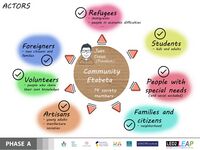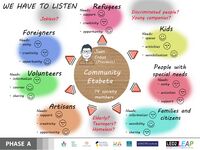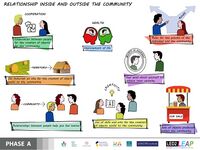LED2LEAP 2020 - Bologna Team 3: Difference between revisions
Jump to navigation
Jump to search
| Line 71: | Line 71: | ||
== Summary of your learnings from the transnational discussion panel on April 22 == | == Summary of your learnings from the transnational discussion panel on April 22 == | ||
''Since the presentation of phase A we have discovered new methods of thinking and development of international analyzes and ideas. | ''Since the presentation of phase A we have discovered new methods of thinking and development of international analyzes and ideas. | ||
From the Dublin team we noticed that their method of analysis is very much geared towards the sustainability of the intervention. | From the Dublin team we noticed that their method of analysis is very much geared towards the sustainability of the intervention. | ||
From the Freising groups, on the other hand, we investigated new methods of graphing and analyzing the territory. We were surprised by the diversification of representation.'' | From the Freising groups, on the other hand, we investigated new methods of graphing and analyzing the territory. We were surprised by the diversification of representation.'' | ||
Revision as of 15:19, 27 April 2020
>>>back to working groups overview
Landscape Democracy Rationale
- Why do you think this community context is relevant from a landscape democracy perspective? What is your hypothesis considering the landscape democracy challenges?
- Format: 3-4 sentences
Location and scope
- You can edit this map with the map editor
- Next to showing us where you are, you may also use this map to localise different focus themes of your community
Phase A: Mapping your Community
Welcome to your community and its landscape
- Eta Beta is a non-profit cooperative formed by President Juan Crous and 14 other members to bring together all those people who have little voice in society in a community in the outskirts of Bologna.
Groups of actors and stakeholders in your community
- The main actors of the community are groups of students, volunteers and families who cooperate in various initiatives. These include several sensitive categories, which however do not interact with each other and exclude new points of view.
Relationships between your actors and groups
- How would you describe the power relationship between the groups?
- Which groups may have shared interests and which are these? (max 200 signs)
- add 1-2 graphical representations to the image gallery based on your PPT presentation, you can add more if you like
Summary of your learnings from the transnational discussion panel on April 22
Since the presentation of phase A we have discovered new methods of thinking and development of international analyzes and ideas.
From the Dublin team we noticed that their method of analysis is very much geared towards the sustainability of the intervention. From the Freising groups, on the other hand, we investigated new methods of graphing and analyzing the territory. We were surprised by the diversification of representation.
Theory reflection
- Reflect on at least three readings from the first section 'Democratic Landscape Transformation
- You can choose references from our reading list or suggest others
- Scope: 250 words
References
- give a full list of the references you have used for this section
Phase B: Democratic Landscape Analysis and Assessment
* template coming
Phase C: Collaborative Visioning and Goal Setting
* template coming
Phase D: Collaborative Design, Transformation and Planning
* template coming
Phase E: Collaborative Design, Transformation and Planning
* template coming
= Phase E: Collaborative Evaluation and Future Agendas * template coming
Process Reflection
- Reflect in your intercultural and interdisciplinary team on the outcomes of your study
- Which limitations were you facing?
- What have you learnt from each other?
- What would you do differently next time?
- You can also use diagrams/visuals
- 250 words text






